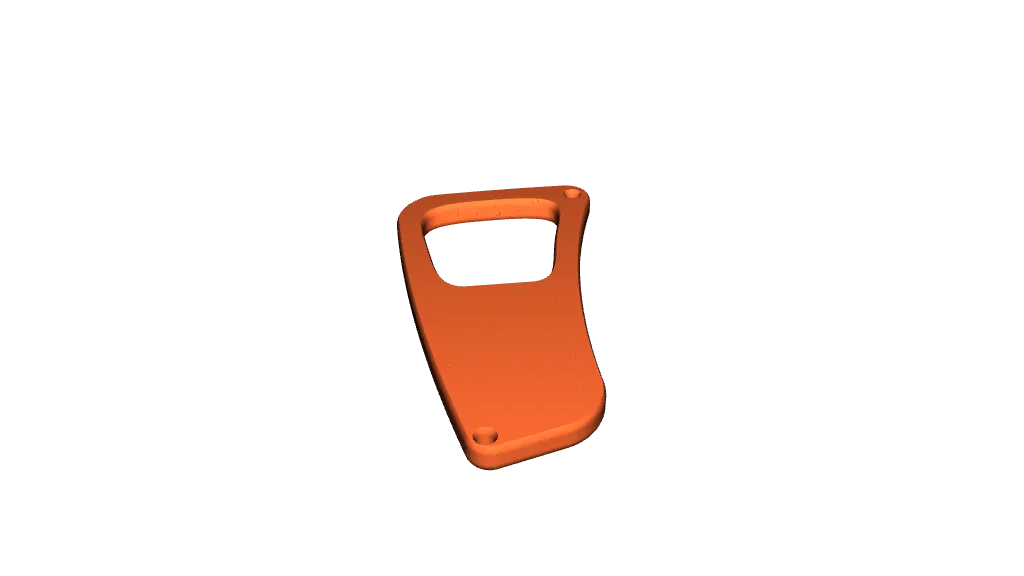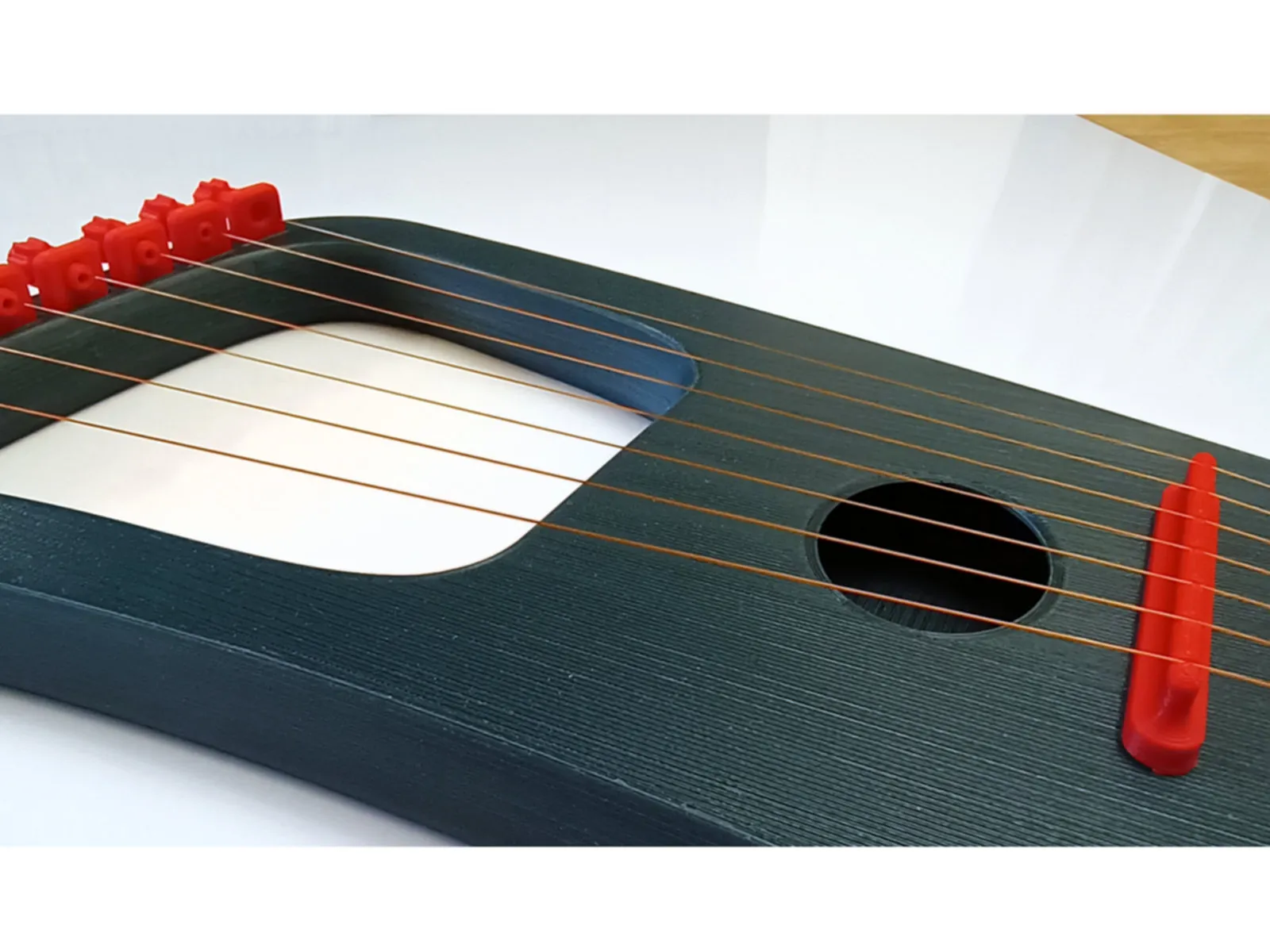Lyre 100% PLA. (project - making musical PLA strings)
Description
PDFAfter experimenting with making a PLA string of 0.8mm from 1.75mm filament, it turned out that this string was very strong and could really serve as a string for a stringed instrument. My previously published one-string instrument The Sound of PLA (Gopichand / Ektara) is an example of this.
However, the manufacturing method published there meant that only 1 string diameter could be made because the stretch value (about 4,5-5x the original length) was fixed. The resulting diameter was always 0.8mm.
A multi-string instrument requires several strings of different diameters to produce all the tones. So I started experimenting.
After testing different methods and eventually working with the largest nozzle I had never used before: 0.8mm, it turned out to be possible to make different workable diameters fairly simple and reproducible.
To obtain a round diameter of the final string, the base string should already be round. This eliminated the possibility of printing a line on the bed, as it is not round. Printing multiple layers is also not an option. In order to still obtain a starting string of a smaller diameter, I therefore needed the largest possible nozzle and had to print "in the air". However, letting a string flow loosely from the nozzle only gave 1 result, namely: the diameter of the nozzle.
In order to obtain different round diameters, I created simple bridges and used the option of the slicer to influence the layer thickness. By printing increasing layer thicknesses, whereby the amount of filament ejected by the nozzle increased or decreased, it was possible to create different diameters with only one nozzle size.
I then stretched these string pieces using the method described in my previous publication: using boiled water and immersion in a bowl with 2 small holes (see blockqoute at model The Sound of PLA). Because the strings were shorter, stretching was possible by pulling on the ends with both hands and moving the string through the bowl until all stretch was completely out. The final strings were between 0.27 - 0.37mm in diameter. Before use I labeled them individually with the measured diameters.
To test the result in the form of an instrument I designed a 7 string lyre with a simple system to tension the strings.
This is a project, so don't expect an easy printable model, but rather a description with example to experiment on your own!
I used the strings in ascending pitch, from the thickest string (low pitch) to the thinnest (high pitch). The result is the instrument presented here.
It is by no means a simple to build model. Assembling and making the strings does require some attention and an eye for detail. The strings are glued with superglue both in the string block and in the individual String End Rings. The strings are tensioned by loosening the (M6) Tuning Screws. So make sure that the Tuning Screws are fully screwed in when gluing! The Bridge part is positioned after pre-tensioning and glued in place to ensure a solid bonding.
The Body is completely printed in 1 piece (I have a print bed of 300x300) with the sound box opening on the bed. The back wall is printed entirely by bridging, which may be a real challenge for some.
I printed all parts with nozzle 0.4mm, layer thickness 0.2 and infill 15% - without supports.
The main reason for sharing this project is the possibility / method of making PLA strings for musical instruments with the described method. Mainly to inspire others to experiment with this. The strings are very strong, I carried out a simple test with a spring scale where I deliberately broke a number of strings. I was able to exert a force of up to 4 Kg on a 0.27mm string before it broke!!
Of course, the use of these produced strings does not have to be limited to musical instruments alone, but may also be used in a different form as part of a design.
I have included the 2 project files which I configured to print the strings with a nozzle 0.8mm.
If there is a wish to assemble the body from 2 parts and thus be able to print this model on smaller printers, please let me know and I will see if I can make / design a 2-part model for the Body.
The instrument is best played with some sort of guitar pick. For that I used the model Simple guitar pick/plectrum of Alasdair and printed it at 90%.
p.s. In the process of experimenting I also tried to make a bow for the strings by printing and stretching strings with a 0.4mm nozzle. The resulting strings were as thin as a hair (down to 0.14mm). I stretched these as a bundle on a bow. However, this does not work as a musical bow because the wires are too smooth and slide over the same material (PLA), so that little vibration is generated by friction.
Tags
Model origin
The author marked this model as their own original creation.










